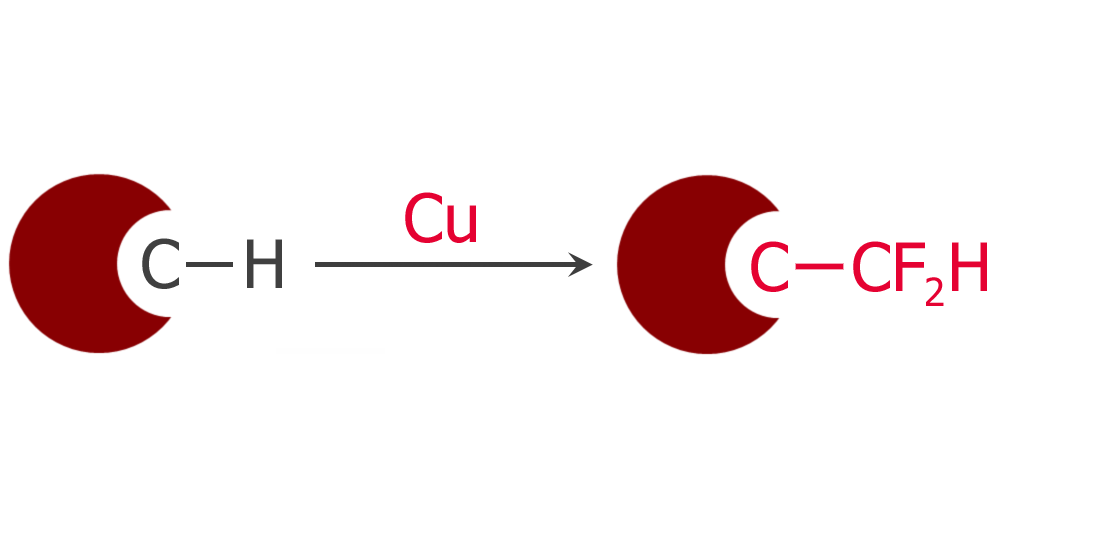Copper-Catalyzed, Chloroamide-Directed Benzylic C–H Difluoromethylation
Introduction of a CF2H moiety in benzylic positions using a copper catalyst.
This new entry of our blog is in some way the combination of some of the chemistry that we have bringing lately to your attention. Not long ago we presented a revival of the Hofmann–Löffler–Freytag reaction, updated with some copper catalysis to allow the cyanation of a C–H bond and later some chemistry for the difluoromethylation of phenols and thiophenols. What if you could, somehow, combine both things?
This was the starting point for Cao (Institute of Coal Chemistry, China) and Liu (Miami University, USA). They had already demonstrated that a difluoromethyl group can be transferred to an alkyl radical by means of copper catalysis. So, the question was, could that be combined with C–H bond functionalization?
Since you are reading this, the obvious answer is yes. In this particular case, the alkyl radical (always in benzylic position) is generated by 1,5-HAT (that is, an intramolecular transference of hydrogen) using a N-chloroamide as the starting material. The alkyl radical enters the catalytic cycle as the ligand for the copper-difluoromethyl complex, increasing the oxidative state of the copper center, thus allowing for the quick and successful reductive elimination of a product bearing the CF2H group.
Well, it is a bit more complicated than that, but not very much. The examples included explore both the amide fragment and the aromatic part. Not many surprises there: 2- and 4-chloro, 5-bromo, etc. substituents withstand the reaction with good yields. The benzylic position can be primary (i.e., that from a methylbenzene) or secondary. Sadly, no examples with heteroaromatic systems are provided. On the other hand, the procedure is suitable for LSF transformations, as demonstrated by preparing derivatives of Chlorambucil and a protease inhibitor. It can be carried out in gram scale (well, 1 g), and you can also introduce a C2F5 substituent using complex (DMPU)Zn(C2F5)2 instead of (DMPU)Zn(CF2H)2.
J. Am. Chem. Soc., 2019, 149(50), pp. 19941–19949. See: 10.1021/jacs.9b11549


